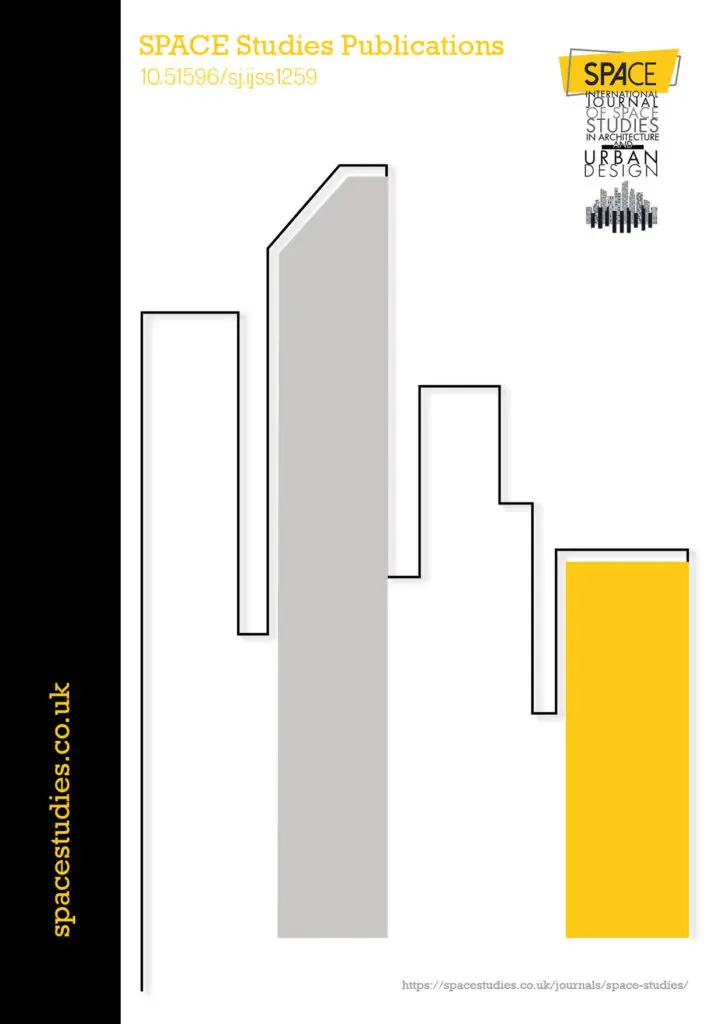
Rapid and uncontrolled urbanisation is posing severe environmental issues to cities in the developing countries. Biophilic urbanism, an emerging concept of urban planning that aspires for regenerative sustainability. Urban agriculture, among the several features of biophilic cities, can generate direct short-term economic gains. This study on a city of a developing economy aims to inquire about the scope of urban agriculture at the neighbourhood level. The research applied semi-structured interviews of the residents, visual observation, mapping, review of relevant policy documents and key informant interviews. The results indicate that existing community-led practices are offering vegetables and shades. There are spaces to incorporate urban agriculture as well. Given that the government and non-governmental organizations support this concept, it is remarkable that residents are willing to embrace urban agriculture in a more organized manner. Supportive regulatory frameworks reflect political will toward biophilic urbanism, but institutional support is still required for effective implementation. The findings of this study suggest that biophilic urbanism could be implemented in the urban areas of developing economies.
£450.00 per Year.
Access to conference registration
Access to Journal subscription
£380.00 per Year.
Access to conference registration. Proof of student eligibility required.
Access to Journal subscription.
£410.00 per Year.
Discounts on conference registrations, SPACE shop and e-journals. Access to members only areas on the website.
Access to Journal subscription.
£400.00 per Year.
Student priced discounts on conference registrations, SPACE shop and e-journals. Access to members only areas on the website. Proof of student eligibility required.
Access to Journal subscription.
Acknowledgements
This study received no financing from public, private, or non-profit organizations.
Conflict of Interests
The authors disclose that they have no competing interests.
References
Anakwenze, U., & Zuberi, D. (2013). Mental health and poverty in the inner city. Health & social work, 38(3), 147-157. https://doi.org/10.1093/hsw/hlt013
Beatley, T. (2011). Biophilic cities Integrating Nature into Urban Design and Planning. https://doi.org/10.5822/978-1-59726-986-5
Beatley, T., & Newman, P. (2013). Biophilic cities are sustainable, resilient cities. Sustainability, 5(8), 3328-3345. https://doi.org/10.3390/su5083328
Byomkesh, T., Nakagoshi, N., & Dewan, A. M. (2012). Urbanization and green space dynamics in Greater Dhaka, Bangladesh. Landscape and Ecological Engineering, 8(1), 45-58. https://doi.org/10.1007/s11355-010-0147-7
Chawla, L., & Derr, V. (2012). The development of conservation behaviors in childhood and youth. https://doi.org/10.1093/oxfordhb/9780199733026.013.0028
Dickinson, E. (2013). The misdiagnosis: Rethinking “nature-deficit disorder”. Environmental Communication: A Journal of Nature and Culture, 7(3), 315-335. https://doi.org/10.1080/17524032.2013.802704
Du Plessis, C. (2012). Towards a regenerative paradigm for the built environment. Building Research & Information, 40(1), 7-22. https://doi.org/10.1080/09613218.2012.628548
el-Baghdadi, O., & Desha, C. (2017). Conceptualising a biophilic services model for urban areas. Urban Forestry & Urban Greening, 27, 399-408. https://doi.org/10.1016/j.ufug.2016.10.016
Farr-Wharton, G. (2019, December). Seed to Feed: Leveraging HCl and Capitalising on Office Environments to Grow Food. In Proceedings of the 31st Australian Conference on Human-Computer-Interaction (pp. 53-63). https://doi.org/10.1145/3369457.3369462
Levidow, L. (2018). London’s urban agriculture: Building community through social innovation. The International Journal of Sociology of Agriculture and Food, 24(3). https://doi.org/10.48416/ijsaf.v24i3.10
Levy, S. S. (2003). The biophilia hypothesis and anthropocentric environmentalism. Environmental Ethics, 25(3), 227-246. https://doi.org/10.5840/enviroethics200325316
Littke, H. (2016). Becoming biophilic: challenges and opportunities for biophilic urbanism in urban planning policy. Smart and Sustainable Built Environment. https://doi.org/10.1108/SASBE-10-2015-0036
Lwasa, S., Mugagga, F., Wahab, B., Simon, D., Connors, J., & Griffith, C. (2014). Urban and peri-urban agriculture and forestry: Transcending poverty alleviation to climate change mitigation and adaptation. Urban Climate, 7, 92-106. https://doi.org/10.1016/j.uclim.2013.10.007
Mabon, L., & Shih, W. Y. (2021). Urban greenspace as a climate change adaptation strategy for subtropical Asian cities: A comparative study across cities in three countries. Global Environmental Change, 68, 102248. https://doi.org/10.1016/j.gloenvcha.2021.102248
Miedema, K. (2019). Grow small, think big: designing a local food system for London, Ontario. URBAN DESIGN International, 24(2), 142-155. https://doi.org/10.1057/s41289-019-00095-5
Mustafa, F. A., & Yaseen, F. R. (2019). Towards the Application of Biophilic Parameters in Local Buildings: a Case Study of Bilkent School, Erbil City-Iraq. Architecture, 10(2). https://doi.org/10.14716/ijtech.v10i2.2416
Newman, P., Beatley, T., & Boyer, H. (2017). Resilient cities: Overcoming fossil fuel dependence. Island Press. https://doi.org/10.5822/978-1-61091-686-8
Reeve, A. C., Desha, C., Hargreaves, D., & Hargroves, K. (2015). Biophilic urbanism: contributions to holistic urban greening for urban renewal. Smart and sustainable built environment. https://doi.org/10.1108/SASBE-11-2014-0057
Reeve, A., Desha, C., Hargroves, C., Newman, P., & Hargreaves, D. (2013). A basis for inquiry into policy considerations for increasing the application of biophilic urbanism. In Urban Environment (pp. 143-151). Springer, Dordrecht. https://doi.org/10.1007/978-94-007-7756-9_12
Ridgers, N. D., Stratton, G., & Fairclough, S. J. (2006). Physical activity levels of children during school playtime. Sports medicine, 36(4), 359-371. https://doi.org/10.2165/00007256-200636040-00005
Ridgers, N. D., Stratton, G., & Fairclough, S. J. (2006). Physical activity levels of children during school playtime. Sports medicine, 36(4), 359-371. https://doi.org/10.2165/00007256-200636040-00005
Roy, S., Sowgat, T., & Mondal, J. (2019). City profile: Dhaka, Bangladesh. Environment and Urbanization ASIA, 10(2), 216-232. https://doi.org/10.1177/0975425319859126
Roy, S., Sowgat, T., Islam, S. T., & Anjum, N. (2021). Sustainability Challenges for Sprawling Dhaka. Environment and Urbanization ASIA, 0975425321997995. https://doi.org/10.1177/0975425321997995
Soderlund, J. (2017). New Opportunities for the Horticultural Industry. Ornamental Horticulture, 23(3), 221-233. https://doi.org/10.14295/oh.v23i3.1115
Srinivasan, S., O’fallon, L. R., & Dearry, A. (2003). Creating healthy communities, healthy homes, healthy people: initiating a research agenda on the built environment and public health. American journal of public health, 93(9), 1446-1450. https://doi.org/10.2105/AJPH.93.9.1446
Tibesigwa, B., Visser, M., Collinson, M., & Twine, W. (2016). Investigating the sensitivity of household food security to agriculture-related shocks and the implication of social and natural capital. Sustainability Science, 11(2), 193-214. https://doi.org/10.1007/s11625-015-0332-6
Toth, A., Rendall, S., & Reitsma, F. (2016). Resilient food systems: a qualitative tool for measuring food resilience. Urban ecosystems, 19(1), 19-43. https://doi.org/10.1007/s11252-015-0489-x
Wan, G., & Wang, C. (2014). Unprecedented urbanisation in Asia and its impacts on the environment. Australian Economic Review, 47(3), 378-385. https://doi.org/10.1111/1467-8462.12076
Wertheim-Heck, S., Raneri, J. E., & Oosterveer, P. (2019). Food safety and nutrition for low-income urbanites: exploring a social justice dilemma in consumption policy. Environment and Urbanization, 31(2), 397-420. https://doi.org/10.1177/0956247819858019
Wilson, E. O. (1984). Biophilia. Harvard university press. https://doi.org/10.4159/9780674045231
Yigitcanlar, T., & Teriman, S. (2015). Rethinking sustainable urban development: towards an integrated planning and development process. International Journal of Environmental Science and Technology, 12(1), 341-352. https://doi.org/10.1007/s13762-013-0491-x
Youzhen, C., & Longlong, D. (2012, August). From Garden City to Smart Growth: The Evolution and Management of New Urbanism. In Proceedings of the 2012 International Conference on Public Management (ICPM-2012) (pp. 266-271). Atlantis Press. https://doi.org/10.2991/icpm.2012.32
Ziari, K., Pourahmad, A., Fotouhi Mehrabani, B., & Hosseini, A. (2018). Environmental sustainability in cities by biophilic city approach: a case study of Tehran. International Journal of Urban Sciences, 22(4), 486-516. https://doi.org/10.1080/12265934.2018.1425153
Enter your email and we’ll send you more information about all activities and membership.

28-29 November 2024
Registered address: 151 West Green Road, N15 5EA, London, UK
Mails to: 23A Alwold Crescent,
SE12 9AF, London, UK
+44 2037242458
+44 7780014146
space@spacestudies.co.uk
architecturalspacestudies@gmail.com
Sign in to continue
Not a member yet? Sign up now